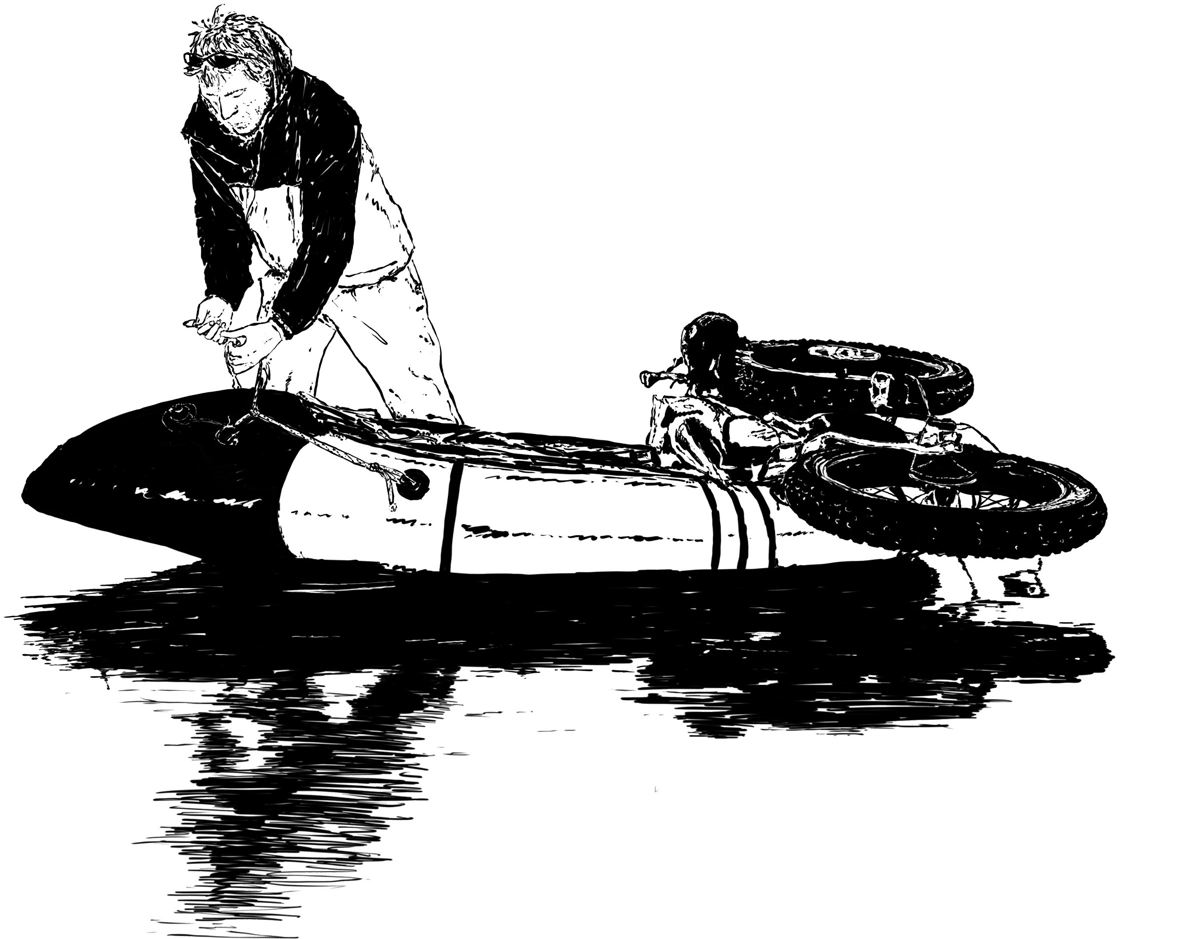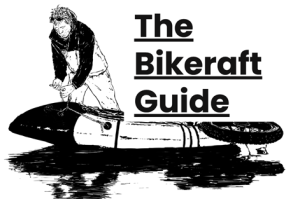Is Bikerafting-Specific Gear Worth It? Probably
Durango Bike Bags review and photos by bikepacker and adventure instructor, Sarah Carr.
With their new lineup of bikerafting-oriented bikepacking bags, Kokopelli has imported the tough TPU fabric and Tru Zip waterproof zippers from the packraft realm into the world of bikepacking storage. They’re also the first company to make a full bike bag lineup specifically for bikerafters.
I tested the Durango Bike Bags on some long alpine rides and bikerafting excursions around the San Juans.
Durango Bikepacking Seat Post Bag
The seat bag uses a twist-on magnetized FidLock attachment system. The waterproof material is thick and heavy, and the bag’s carrying capacity is impressive- so much so that I’m not sure how you’d ever max it out without putting too much weight behind you. It requires a lot of exposed seat post, which might make it not work for shorter riders or setups with short seat posts, and is not dropper-compatible.
Pros
While I didn’t dunk this bag in the river, I’m pretty confident it’s fully waterproof. It feels like a tiny raft. And it’s simple and quick to detach from the seat post at camp. The integrated bungee attachments on top can be nice for stuffing a jacket or sandals.
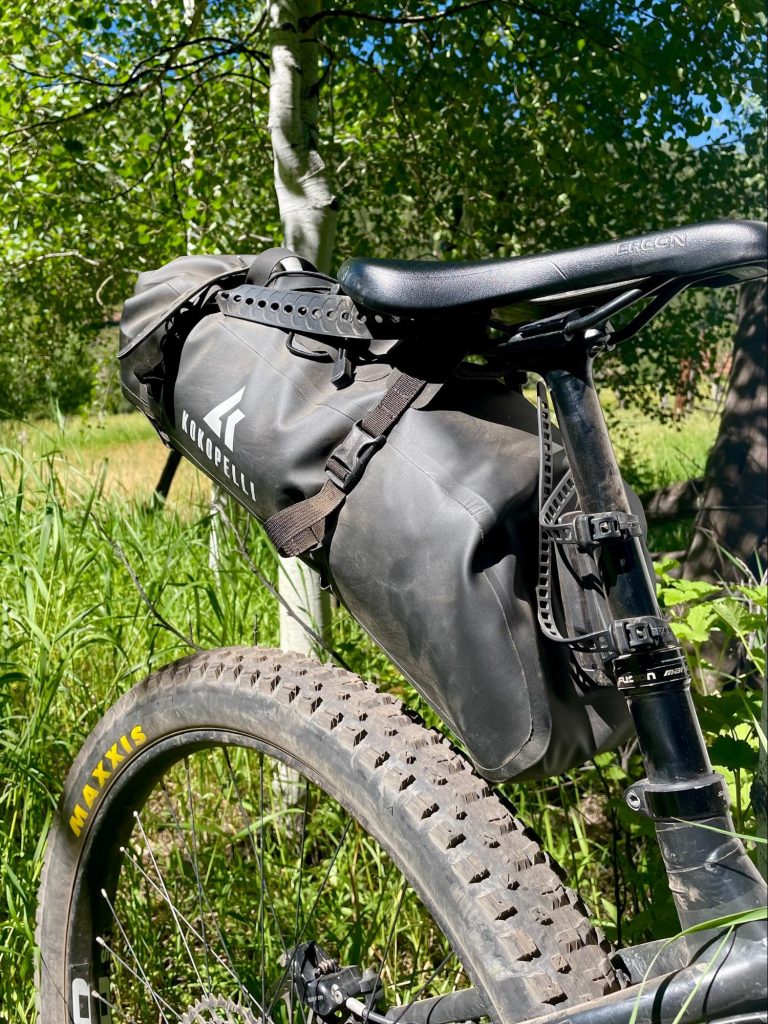
Cons
Even with the reinforced panels, the attachment system really needs some rethinking. I only filled the bag halfway and cranked down the attachments as much as possible, but I still had to reinforce it with a Titan strap back to the seat to keep the bag from swinging wildly. Some sort of strap system to pull the back of the bag in toward the seat would help a lot with stabilization.
A valve to help get the air out when closing the roll-top opening would also be a positive addition- it can be tough to remove trapped air from the single open end of the bag.
The extreme durability of the bag contrasts with that of its FidLock attachment. The twist-magnet mechanism itself seems fairly sturdy, but the straps that attach it to the seat post are thin chains of rubber and were already showing signs of wear where they hook closed after only a few days. I’m not sure how long those thin straps will hold up, especially with sun and water exposure, rowdier descents and other normal alpine and desert bikepacking use/abuse.
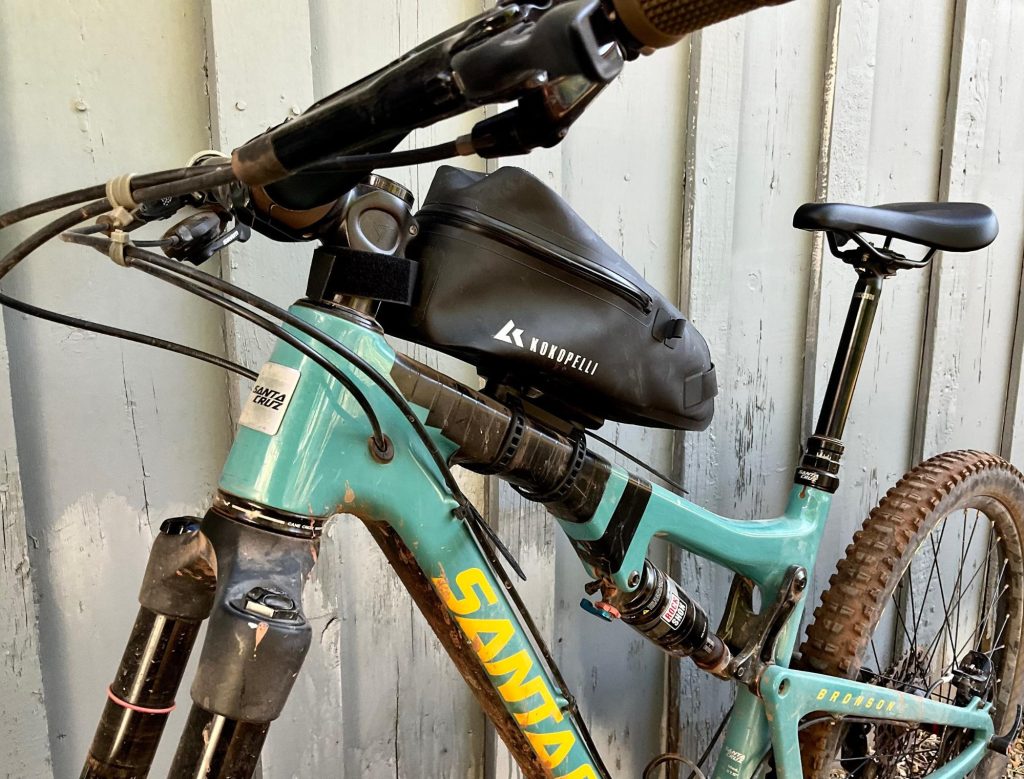
Durango Bikepacking Top Tube Bag
The top tube bag uses the same twist-locking FidLock attachment system as the seat bag. Compared to every other top tube bag I’ve used or encountered, this bag is massive. It has a touch-screen-compatible top compartment, and at first I figured the ever-ballooning average size of smartphones had to have driven the size of the whole bag. It’s SO BIG. It reminds me of a tank bag for a motorcycle.
Turns out, though, that the technology pocket/sleeve in the top of the bag is long but fairly narrow- my “mini”-sized phone maxed out its width, though definitely not its height. I’m not sure the latest pocket-defying quad-camera smartphones would fit.
Pros
You can stuff a jacket, tools, inReach, a two-day pile of snacks, and maybe even an extra beer in this thing.
The FidLock attachment seems finicky and excessive, and a simpler top tube strap system would definitely work just as well. It stayed securely on the bike on some rattly downhills though, and the ease of detachment was admittedly a handy bonus feature at camp each night.
The “self-healing” zipper malfunctioned every third or fourth time I tried to close the bag… but sure enough, it did go back together with minimal coaxing.
Cons
While I didn’t hit my knees on it while pedaling as many times as I thought I would when I first mounted it to my top tube, this bag could really benefit from a more tapered design.
My phone got cooked pretty quickly facing upward in the summer sun, so I didn’t carry it in the exposed phone compartment for more than the first few minutes past the trailhead. This microwave-your-phone problem definitely isn’t unique to Kokopelli’s version.
More importantly though, the zipper placement on this bag really needs adjustment. There’s just one zipper, and the bag opens from the stem-facing side, which means that the stem gets in the way every time the zipper is used. That makes it very difficult to manipulate one-handed while riding, and it’s not super smooth to open and close even with both hands.
Finally, the top tube bag is mostly waterproof. But it’s not waterproof. I’m confident that it would keep its contents dry in a downpour. But even with the Tru Zip zipper securely closed, it filled with water and thoroughly marinated its contents by the end of a three-day bikerafting trip.
I certainly put the bag through the ringer though, by leaving it attached to the bike while on the river. Perhaps stowing it for the packrafting part of the trip wouldn’t have pushed it past its limits. But if it was designed specifically for wet conditions, it’s not quite over the threshold for keeping its contents safe.
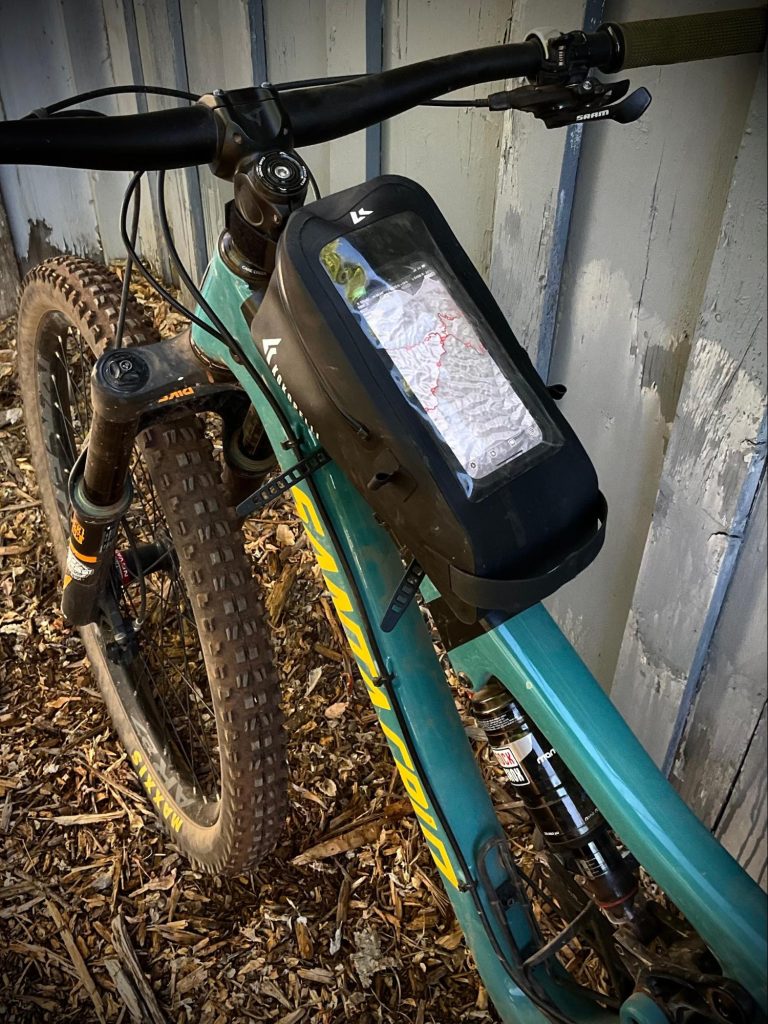
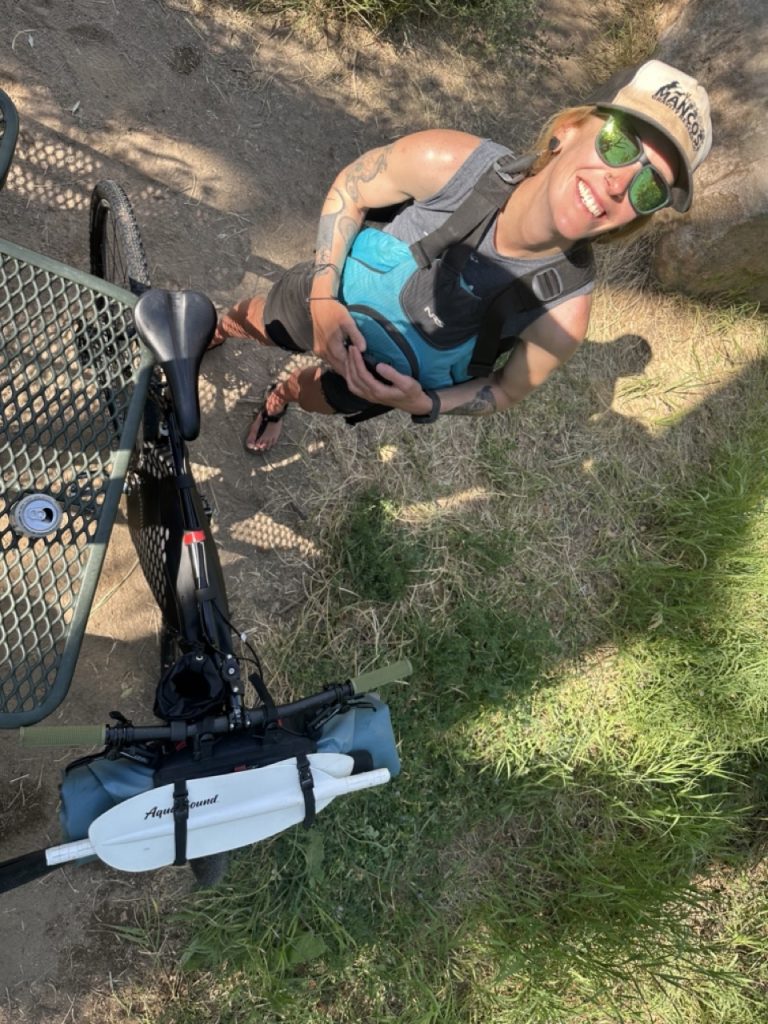
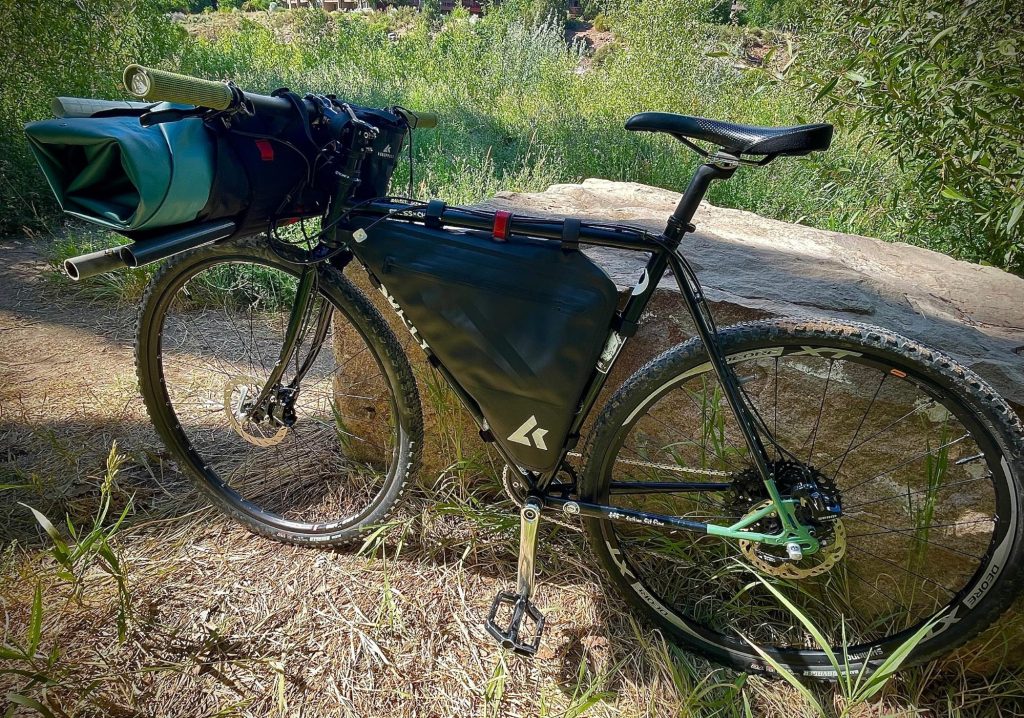
Durango Frame Bag
The frame bag is simple and very heavy-duty. I tested it out on a short bikerafting jaunt that included splashy whitewater and an unplanned swim. And the waterproof zipper on the main compartment held its own. My stowed clothes were still dry at the takeout. The regular zipper on the small compartment didn’t fare as well. The pocket didn’t fill with water, but everything in it was damp.
This brought up a bit of a downside to the fabric Kokopelli is using for all of these bags. The material is super tough, and it’s waterproof. But it’s also air-proof. So when the insides get wet, unless you thoroughly towel them out, they’ll stay wet for a long while. And hot sun + black plastic + wet gear can be a formula for some fast-growing stank.
Pros
The design is clean and straightforward- no dividers or excess pockets, just a big compartment and a small one. And, at least with the L version that I used, the carrying capacity is enormous.
Cons
The small compartment doesn’t stay dry, possibly due to the different zipper used on that side. Again, I imagine it would do just fine in the rain, but strapped on the front of a packraft in whitewater, it seeped.
Durango Feed Bag
Full disclosure, I’ve never been a feed bag person. When they first became ubiquitous and my friends started dropping money on them, I smugly strapped an old cleaned-out climbing chalk bag to my handlebars and used that. (You’d be amazed at how much chalk can linger in one of those things… for years every snack and beer that entered came back out with a generous dusting.) It was simple and dirt cheap, and it worked just fine. So I didn’t expect to find too much use for this feed bag.
Turns out I really like it though.
Pros
It’s simple, sturdy, fits a Crank Yanker or a water bottle or a ton of snacks, closes up securely (though not in a waterproof way… it has the same drawstring closure as most feed bags, so it won’t keep out the deluge), and stays put when you reach into it while riding. And most importantly, it protected its precious carbonated cargo on the trail and on the river.
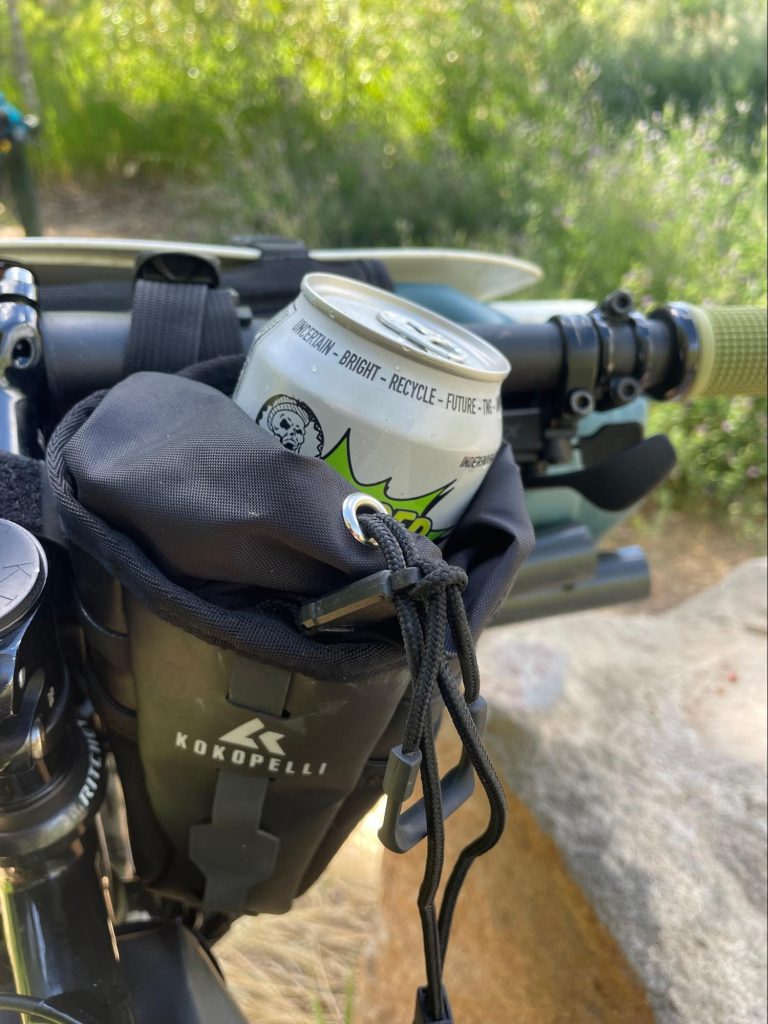
Cons
The attachments don’t play well with shorter stems, as seems to be the case with most feed bags. But it fits perfectly on longer stemmed bikes like my Straggle-Check.
Maybe this is the no-frills feed bag that finally converts me to a feed bag user. At least for trips in terrain that calls for big cans and long stems.
Durango Bike Bags: The Bottom Line
There are definitely significant kinks to be worked out in this new lineup, especially in the attachment and closure categories. Kokopelli didn’t knock it out of the park yet with the Durango Bike Bags. But with some rethinking, they may be on to something with their use of burly boat-like materials for bikerafting-specific bags. And with the exception of the top tube bag, which is priced the same as the frame bag, these bags are all very modestly priced. Do I think bikerafting-specific bike bags are worth it? All I have to say is that I hope there will be a Durango Bike Bag 2.0.
Price
Note: These bags are notably more affordable than other bags on the market, which makes them a great entry-level purchase that will take care of your needs.
- Durango Frame Bag: $89.00
- Durango Bikepacking Top Tube Bag: $89.00
- Durango Bikepacking Seat Post Bag: $99.00
- Durango Feed Bag: $29.99
- Durango Handlebar Bag & Harness: $109.00**
**The crew at The Bikeraft Guide, including Sarah, chose not review the Handlebar Bag & Harness due to its weight. In order to go as light as possible, we prefer simply attaching our boats and paddles to the handlebars with Titan Straps or some other tension strap. This is not to say it’s a bad idea to use a handlebar harness. It can protect your rolled-up boat from abrasion, and it can more securely hold your paddles in many cases.
Click here to purchase the Durango Bike Bags at Kokopelli.com.
To read more reviews, visit The Bikeraft Guide Blog.

